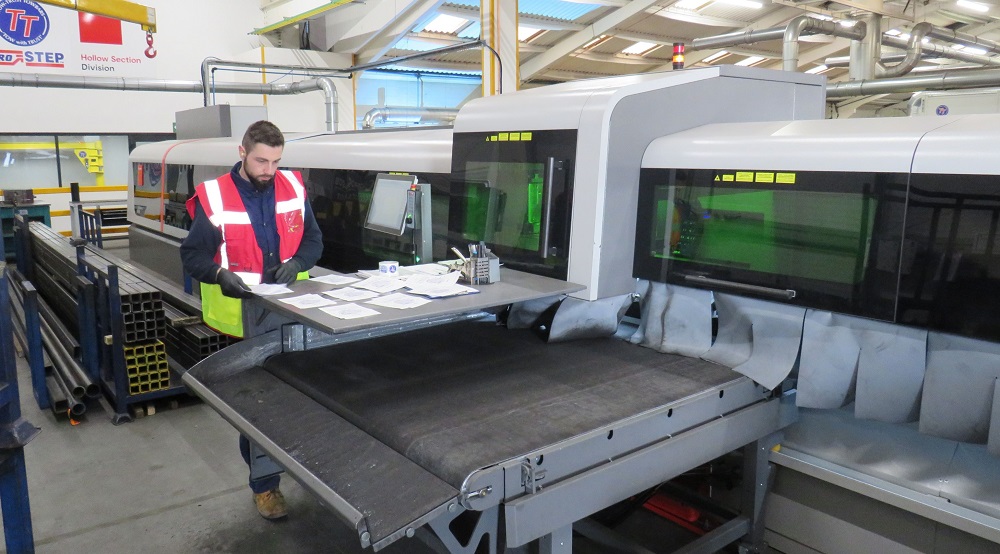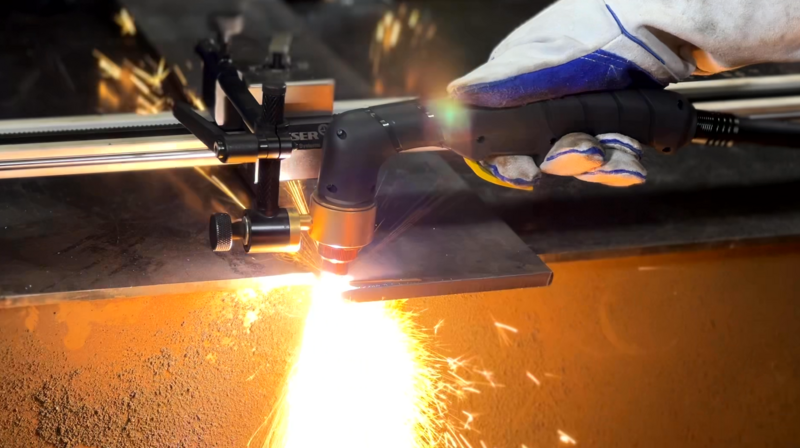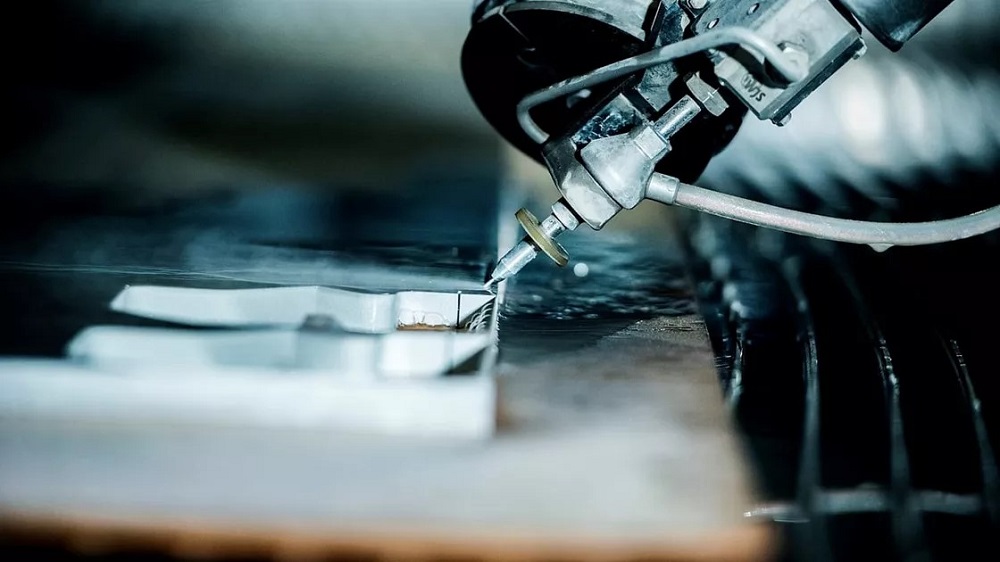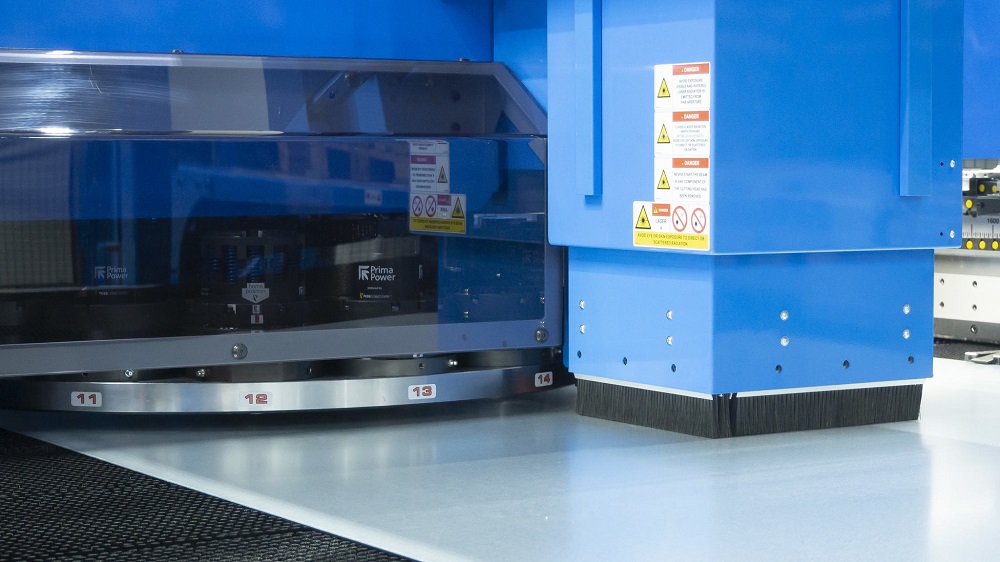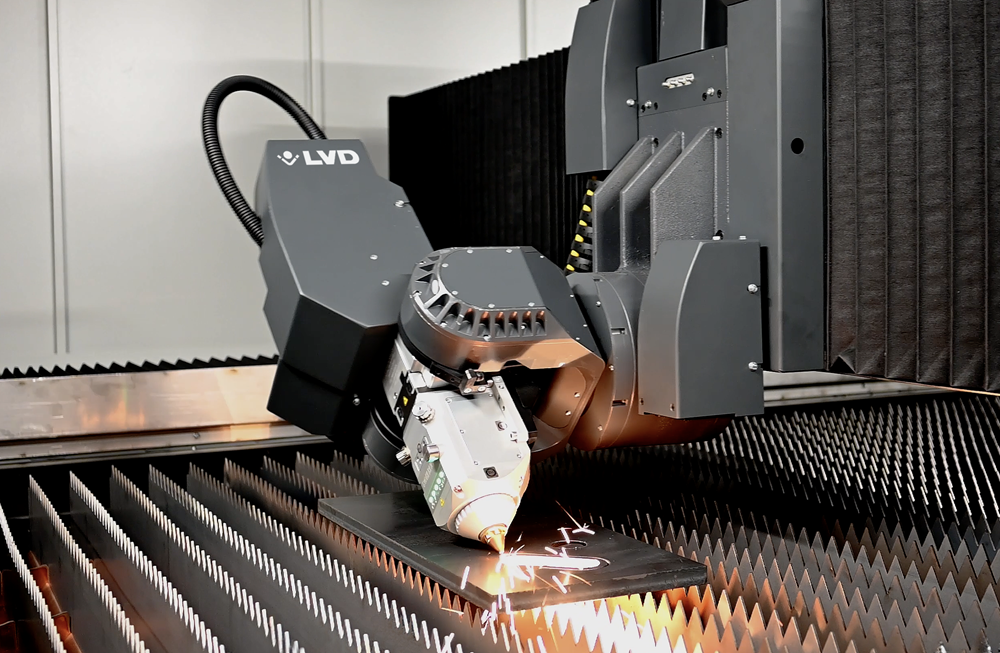Warwickshire-based tow-bar manufacturer Tow-Trust has invested heavily in the latest technology and automation, including a multitude of machines from Bystronic.
CEO of Tow-Trust Towbars Tom Miller says: “We manufacture over 3000 part numbers and ship hundreds of thousands of units every year. The manufacturing process starts at two different times: we have the hollow stock section and the sheet steel divisions. The sheet steel division runs the very latest in technology with laser cutting and automation. From here, we pass the products through press braking and welding sections to the work-in-progress holding area.”
The sheet steel division is home to a wealth of technology from Bystronic, with the area accommodating three Bystronic press brakes lined up next to a Bystronic ByStar Fiber laser cutting machine. Adjacent to the four machine line-up is another ByStar Fiber laser cutter.This machine is continually processing sheet steel credit to the Bystronic ByTrans 3015 Extended automated sheet metal loading facility.
The company also has a hollow section division. Discussing this area, Miller says: “Here, we have the automated Bystronic ByTube 130 for cutting round and square tube material stock.Alongside this is a custom-built AMOB CH120 semi-automated machine for tube bending. This gives us complete control over our products, which is essential as we work to very tight tolerances and require the ultimate in quality.
“When the hollow section and sheet steel divisions complete their parts, components are moved to the work-in-progress area,” he continues.“Here, we construct sub-assemblies and undertake our quality control process. This feeds into our welding shop where we have 10 manual welding bays for small intricate parts and low-volume production parts. We also have four robotic bays for high-volume production.”
For further information www.bystronic.co.uk






